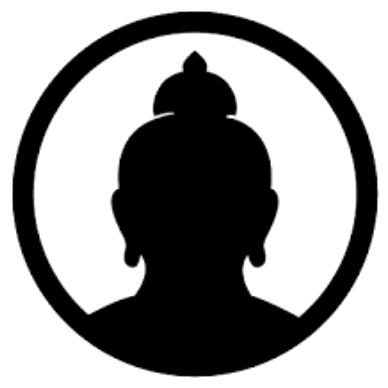Resilience expert Linda Graham shares three ways to use awareness and deep breathing to ground ourselves throughout the day.
YOU MIGHT ALSO LIKE
CLEAR ALL
BY TEACHER
BY TYPE
FILTER

TOPIC
- Mindfulness Meditation (15)
- Somatic Practices (14)
- Stress Management (14)
- Buddhism (12)
- Guided Meditation (12)
- Mindfulness Practices (12)
- Building Character (10)
- Lovingkindness Meditation (10)
- Consciousness (9)
- Self-Care (9)
- BIPOC Well-Being (8)
- Compassion Meditation (8)
- Mindfulness (8)
- Anxiety (7)
- Compassion (7)
- Black Well-Being (6)
- Movement Meditation (6)
- Physical Health (6)
- Tuning Forks (6)
- Athlete Well-Being (5)
- Body Scan Meditation (5)
- Chronic Pain (5)
- Lovingkindness (5)
- Neuroscience (5)
- Self-Development (5)
- Self-Mastery (5)
- Trauma Healing (5)
- Values (5)
- Brain Health (4)
- Community Healing (4)
- Emotional and Mental Health (4)
- Focus (4)
- Inner Life (4)
- Inner Peace (4)
- Intention (4)
- Mantra Meditation (4)
- Presence (4)
- Self-Discovery (4)
- Stress (4)
- Tibetan Buddhism (4)
- Transcendental Meditation (4)
- Women’s Well-Being (4)
- Yoga (4)
- Yoga Therapy (4)
- Altered States (3)
- Embodiment (3)
- Happiness (3)
- Holotropic Breathwork (3)
- Insight (Vipassana) Meditation (3)
- Joy (3)
- Neuroplasticity (3)
- Parenting (3)
- Self-Healing (3)
- Sleep (3)
- Sound Bath Meditation (3)
- Spiritual Awakening (3)
- Walking Meditation (3)
- Well-Being (3)
- Zen Meditation (3)
- Chakra Meditation (2)
- Chronic Health Conditions (2)
- Conscience (2)
- Dharma (2)
- Disconnection (2)
- Empathy (2)
- Empowerment (2)
- Enlightenment (2)
- Exercise (2)
- Fear (2)
- Human Potential (2)
- Identity (2)
- Imagination and Creativity (2)
- Interdependence (2)
- Intergenerational Trauma (2)
- Intuition (2)
- Leadership (2)
- Life Challenges (2)
- Perception (2)
- Personal Development (2)
- Pregnancy and Childbirth (2)
- Racial Healing (2)
- Racism (2)
- Search for Purpose (2)
- Self-Acceptance (2)
- Self-Compassion (2)
- Self-Reflection Practices (2)
- Spiritual Life (2)
- Spirituality and Health (2)
- Storytelling (2)
- Suffering (2)
- The Feldenkrais Method (2)
- Transformation (2)
- Activism/Service (1)
- Acupuncture (1)
- Addiction Recovery (1)
- Aging (1)
- Alexander Technique (1)
- Anger (1)
- Autoimmune Disease (1)
- Awe (1)
- Body Mapping (1)
- Buddha Nature (1)
- Calming Meditation (1)
- Cancer (1)
- Chakras (1)
- Cognitive Behavioral Therapy (1)
- Cognitive Psychology (1)
- Connection with Nature (1)
- Courage (1)
- Crystal Bowls (1)
- Death or Loss of a Loved One (1)
- Decision Making (1)
- Dementia (1)
- Depression (1)
- Digital Life (1)
- Drum Therapy (1)
- Ego Dissolution (1)
- Emotional Intelligence (EQ) (1)
- Facing Own Death (1)
- Faith (1)
- Forgiveness (1)
- Freedom (1)
- Generational Healing (1)
- Gratitude (1)
- Grief (1)
- Habits of Mind (1)
- Healing Approaches (1)
- Honoring Emotion (1)
- Hope (1)
- Hospice (1)
- Indigenous Well-Being (1)
- Karma (1)
- Kundalini (1)
- Kundalini Yoga (1)
- Letting Go (1)
- Lifestyle Medicine (1)
- Living with Illness (1)
- Longevity (1)
- Love (1)
- Manifestation (1)
- Non-Duality (1)
- Offering Support to Others (1)
- Panic Attacks (1)
- Patience (1)
- Peak Performance (1)
- Philosophical Approaches (1)
- Plant-Based Medicine (1)
- Positive Psychology (1)
- Postpartum Depression (1)
- Prayer (1)
- Psychedelic Research (1)
- Psychology (1)
- PTSD (1)
- Qi (1)
- Quantum Physics (1)
- Race and Gender (1)
- Racial Discrimination (1)
- Racial Justice (1)
- Reiki (1)
- Rest (1)
- Ritual (1)
- Rolfing (1)
- Science and Spirituality (1)
- Self-Actualization (1)
- Self-Control (1)
- Self-Love (1)
- Self-Worth (1)
- Setting Limits and Boundaries (1)
- Shamanic Healing (1)
- Shame (1)
- Social Justice (1)
- Soul Mission (1)
- Spiritual Healing (1)
- Spiritual Practices (1)
- Spiritual Quest (1)
- Spirituality and Politics (1)
- Subconscious (1)
- Suicide Loss Survivor (1)
- T’ai Chi (1)
- The Divine (1)
- Theta Healing (1)
- Transcendent Experience (1)
- Trust (1)
- Unconscious Bias (1)
- Visualization (1)
- Wake-Up Calls (1)
FILTER

TEACHER
- Andy Puddicombe (3)
- Wim Hof (3)
- Amishi Jha (2)
- Ashley Neese (2)
- Daniel Goleman (2)
- Deepak Chopra (2)
- don Miguel Ruiz Jr. (2)
- Kelly McGonigal (2)
- Pema Chödrön (2)
- Ram Dass (2)
- Stanislav Grof (2)
- Stephen Levine (2)
- Yongey Mingyur Rinpoche (2)
- adrienne maree brown (1)
- Andrew Weil (1)
- Anthony de Mello (1)
- Arielle Schwartz (1)
- Bret Lyon (1)
- Chögyam Trungpa (1)
- Damien Echols (1)
- Dan Harris (1)
- Daniel J. Siegel (1)
- Don Hanlon Johnson (1)
- Elizabeth Mattis Namgyel (1)
- Esperanza Spalding (1)
- Francoise Bourzat (1)
- Gabrielle Bernstein (1)
- Gaylon Ferguson (1)
- Helen Weng (1)
- Jack Kornfield (1)
- Jana Long (1)
- Jessamyn Stanley (1)
- Jill Bolte Taylor (1)
- Joan Borysenko (1)
- Joan Chittister (1)
- Judson Brewer (1)
- Karlfried Graf Dürckheim (1)
- Ken Wilber (1)
- Krista Tippett (1)
- Kristin Neff (1)
- Michael Bernard Beckwith (1)
- Mukti (1)
- Nancy Bardacke (1)
- Nancy Mellon (1)
- Nicole Cardoza (1)
- Norman Fischer (1)
- Paul Gilbert (1)
- Pema Khandro (1)
- Peter Crone (1)
- Peter Russell (1)
- Phillip Moffitt (1)
- Rachel Ricketts (1)
- Ralph De La Rosa (1)
- Renee Baribeau (1)
- Resmaa Menakem (1)
- Richard Davidson (1)
- Sally Kempton (1)
- Sarah Powers (1)
- Shakti Gawain (1)
- Sharon Salzberg (1)
- Shinzen Young (1)
- Silvia Nakkach (1)
- Ta-Nehisi Coates (1)
- Tara Brach (1)
- The Dalai Lama (1)
- William Bloom (1)





